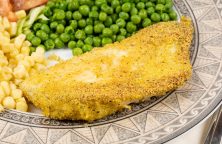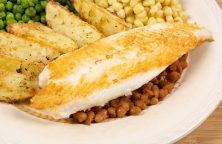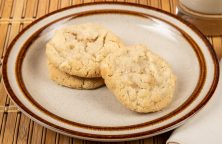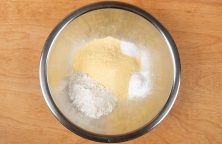Practically Perfect Popcorn
2014-10-10- Yield : 8 cups
- Servings : 2
- Prep Time : 3m
- Cook Time : 5m
- Ready In : 8m
Related Recipes:
Nutritional Info
This information is per serving.
-
Calories
160 -
Calories from Fat
50 -
Total Fat
5g -
Saturated Fat
1g -
Trans Fat
0mg -
Cholesterol
0mg -
Sodium
300mg -
Carbohydrates
27g -
Dietary Fiber
7g -
Sugar
0g -
Protein
4g -
Serving Size:
About 4 cups (960 ml)
This simple method makes practically perfect popcorn with little or no unpopped kernels.
Homemade popcorn is an easy, fresher, lower calorie alternative to microwave popcorn.
Four cups of popcorn provides 7 grams of fiber. Eating popcorn without butter saves 100 calories or more per serving. An equivalent serving of air popped corn has 115 calories, 5 grams of fat, and 7 grams of fiber making it a filling low calorie, high fiber snack.
Fat and salt enhances the flavor of popcorn. If you prefer salted popcorn, popping corn in oil helps salt adhere to the kernels.
Using the Practically Perfect Popcorn method and a heavy bottom pan practically eliminates unpopped kernels, scorching, and burning. Depending on your pan and stove heat setting, you may be able to pop corn without shaking the pan. If you own a glass top cooktop, check your instruction manual about moving a pan across the glass surface to avoid damaging the surface.
To further prevent burning, use a high smoking temperature oil like refine avocado oil or ghee (Indian clarified butter). Both have smoking points around 500°F (260° C). Kernels begin popping around 360°F (182°C) but the oil temperature can easily exceed 400°F (205°C).
Why Make Homemade Popcorn?
There are two reasons to make homemade popcorn:
First, less sodium. You control how much salt is added. Some movie feather and microwave brands easily supply over 1,000 mg of sodium.
Second, no trans fat. Some manufacturers are still using less expensive, shelf stable, partially hydrogenated oils. One inexpensive brand of microwave popcorn has 4 grams of trans fat per serving. One bag has about 3 servings. Eat the whole bag, which I have done, and you get almost 12 grams of heart clogging trans fat. The American Heart Association recommends limiting foods with trans fat to 1 percent of calories per day or between 2 to 3 grams per day. Popcorn or any food with 4 grams of trans fat per serving should be avoided.
Nutrition information
Nutrition information is for popcorn made using vegetable oil. Using ghee or clarified butter adds 6 grams of saturated fat and 22 mg of cholesterol.
Recipe updated 5-14-2015: Reducing oil to about 3/4 tbsp (10 ml) produced the same results with less fat cutting calories per serving by 50 calories from 210 to 160.
Ingredients
- 3/4 to 1 tablespoon (10 to 15ml) vegetable oil or clarified butter
- 1/4 cup (68 g) popping corn
- 1/4 teaspoon (1.25 ml) salt or popcorn salt or to taste
Method of Preparation
Step 1
Add oil and 2 or 3 kernels of popcorn to a heavy bottom 3 qt/l saucepan, cover and heat oil over medium to medium high heat until kernels pop.
Step 2
Remove pan from heat, add popcorn, cover and sit about 30 seconds. Return pan to heat, adjust cover leaving a slight gap for stream to escape. When kernels begin to pop, gently move pan back and forth over the burner.
Step 3
As soon as popping time slows to several seconds, remove pan from heat and immediately transfer popped corn to a large serving bowl (metal, ceramic or glass. Salt if desired and serve.








